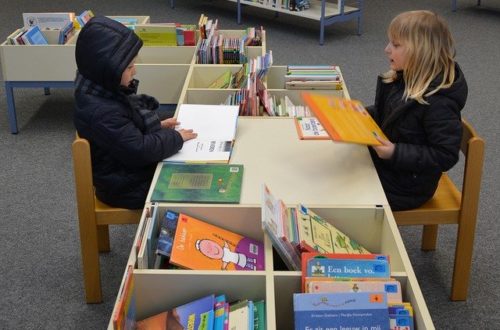I just finished reading Anthony Pedriana’s Leaving Johnny Behind, an enormously important and under-appreciated book that I discovered by chance, thanks to a post on Facebook. (Social media certainly does serve a purpose other than being a black hole of procrastination from time to time!) The author is a retired teacher and principal who, quite by chance, found himself at the center of the reading wars: in an attempt to boost the reading performance of a class that was falling behind, Pedriana went against everything he had been taught and permitted one of the teachers in his school to implement a scripted reading program for a single short lesson each day. Stunned by its success, he began to reconsider his prejudices and attempted to introduce it into other classrooms, only to face a level of rebellion that seemed entirely disproportionate to his request.
The book that Pedriana produced in response to that experience traces the history of the reading wars, beginning with the education reformer Horace Mann’s fateful trip to Germany in the 1840s—a time when “teachers brandished their instructional authority with the subtlety of a meat cleaver by literally brow-beating number facts and alphabetic knowledge into their quavering charges.”
A Pedriana recounts:
While Mann was on a trip to Europe, the director of Leipzig’s schools, Dr. Charles Vogel, took him on a classroom tour. What struck Mann most was the dichotomous (compared to U.S. practice) manner in which children were taught to read:
Not only did he…notice the exceptional quality of the teachers, but he paid great attention to the specific methods they employed. Instead of the children being expected to learn individual letters by rote memory, then syllables, and finally words, they were given books with pictures of common objects. Underneath each picture was its simple name.
Mann found such tactics tailor-made to his progressive agenda that sought to foster literacy through kindness, respect, and various other expressions of what came to be known as a child-centered curriculum.
I was familiar with the basics of the story beforehand, but when I encountered it in Pedriana’s book, something made me stop and really think about Mann’s observations and assumptions.
The more I thought about it, the more it seemed to me that Mann had fundamentally misread (pun intended!) the situation, mistaking correlation for causation and setting off a slow-motion disaster whose consequences continue to reverberate to this day.
Let me explain:
1) Mann observed that the Boston schoolmasters taught students to read in a way consistent with the alphabetic principle—that is, students learned letter-sound correspondences, then blended them into syllables and then into words. He also observed that the Boston schoolmasters were strict disciplinarians who treated their students very harshly.
2) Mann traveled to Germany and observed that students were taught to read via whole words, accompanied by pictures. He also observed that teachers were not strict disciplinarians and that they treated students kindly.
He therefore drew the following conclusions:
1) There was something inherent in the teaching of reading according to the alphabetic principle that caused a rigid, authoritarian teaching style.
2) There was something inherent in the teaching of reading according to the whole-word/picture method that caused a kindly and gentle teaching style.
In short, he confused the style of teaching with the method of reading instruction. But in reality, there is no innate connection between these things.
There is no reason, for example, why children learning their letters cannot be shown pictures to help them learn letters (bear for “B,” cat for “C,” etc.). As any pre-K teacher can easily attest, this happens all the time.
There is also no reason that reading instruction based on the alphabetic principle—that is, the fact that English words are in fact made up of letters that make particular sounds—cannot be done in a gentle way that is appropriate for young children. Again, this happens all the time.
Had the Boston schoolmasters taught the whole-word method, their tactics would almost certainly have been just as authoritarian; and had the Leipizig teachers taught according to the alphabetic principle, their methods would presumably have been just as mild.
It is also entirely possible that children were taught both kindly and according to the alphabetic principle elsewhere in Germany—Mann seems to have been influenced by the practices at a single school in a single city. (Likewise, given the infamous nineteenth-century Prussian proclivity for order and hierarchy, it seems probable that there were German schools whose harshness and disciplinary practices rivaled anything that Mann had witnessed in Boston—regardless of what method they used to teach reading.)
Incidentally, despite his role as the secretary of the Massachusetts Board of Education and eventually the outsized role he played in shaping American public education, Mann was not actually a teacher himself. So while he fought valiantly for public education, he also fell into that great American tradition of non- or failed educators-turned-reformers who seek to impose their ideas about education on the public at large bluntly and without fully grasping the real-world implications or consequences of their beliefs.
Had Mann been a teacher who witnessed the consequences of switching from a method based on the alphabetic principle to one based on the whole-word method, he might very well have reconsidered his assumptions; however, from his perch as secretary of the Massachusetts Board of Education, he was free to rail against the teaching of those “bloodless, ghastly apparitions” otherwise known as the letters of the alphabet. (In what is arguably the best line of the book, Pedriana compares Mann’s language to “that of a Stephen King novel.”)
Although the whole-word method of reading instruction did not seriously catch on until the early twentieth century, the damage was done. It did not matter that children were effectively required to memorize the appearances of tens of thousands of word by rote, “as if they were dogs” (as Rudolph Flesch put it in Why Johnny Can’t Read)— rote memorization and rigid authoritarian teaching styles had been firmly tied to the phonics camp, and there they have remained etched in the popular imagination ever since.
The fact that American teachers have not taught like those harsh nineteenth-century Boston schoolmasters for many, many decades now is irrelevant: they are like zombie straw men, always standing at the ready to be held up as warnings against the dangers of instruction that might veer too far towards the explicit and the systematic (no matter how many videos of happy, smiling, chanting children might be shown).
What has occurred, in fact, is a fascinating rhetorical sleight of hand: proponents of whole language (and often balanced literacy) claim that their approach allows children to focus on meaning from the start—the fact that children must spend enormous amounts of time rote-drilling “sight words” is conveniently downplayed or even ignored altogether, as are the numerous pitfalls of relying on context clues. The airy goal of “making meaning” is considered sufficiently noble as to remove these very serious and very pragmatic concerns from the realm of acceptable discussion. And anyone who questions their omission can be conveniently accused of wanting to impose draconian practices guaranteed to stifle children’s love of learning.
When it comes to phonics, the insinuation seems to be that beginning readers already know what words say and are asked to break them into bits as some sort of pointless academic exercise. But that, of course, is completely absurd: the whole reason that children need to learn to read is that they do not spontaneously develop the knowledge of what written words say. If they did, there would be no need for reading instruction in the first place.
Of all the rabbit holes in the world of reading instruction, this is among the largest and deepest. It remains to be seen how many of those who have fallen down it can climb back out—or whether they can become aware that they are sitting in a rabbit hole at all.





